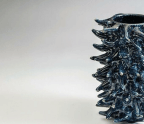Malaysia's Dusun Tindal Pottery

In many pottery villages the clay sources are found hours away in terms of walking distance (as there are many spots in the rainforest that are not accessible by car) or at a river bed populated by crocodiles.
Abstract
Traditional pottery making in Malaysia is a millenniums old tradition which that is supported by the Malaysian Handicraft Development Corporation and constructive steps have been taken to sustain it. Because Malaysia has an approximate population of 31 million, which is comprised of more than 200 different ethnic groups, the importance of this craft —, which carries strong traces of culture, — becomes evident. Thus, Dusun Tindal’s pottery production, which belongs to one of these main ethnic groups (of which a great majority live in the Sabah state), has been conserved by the Ccorporation due to their craft’s characteristics and the primitive methods they use throughout the process. Within the field study conducted in November 2014, it was determined that there were only two or three potters left in Malaysia’s Sabah state who were maintaining their traditional pottery production. Kantiam Binti Setan, who belongs to the Dusun Tindal tribe, was interviewed in her hut-workshop in the rain forests of Melangkap Kapa Village and her production process was recorded. The aim of this study is to examine and document Kantiam’s homeland’s traditional and cultural reflections on her ceramic forms.
Introduction
Currently, the population distribution of Malaysia, which is approximately 31 million and has 13 autonomous states, is made up of 50% Malay (Muslim), 22.6% Chinese, 11.8% local community, 6.7% Indian, and 8.2% foreign nationals. Within this, 61% (who are entirely Muslim) consist of Malays and the local community (some which are Muslim) who are , meaning they are referred to as the rightful owners of Malaysian lands. Moreover, it is known that in Malaysia there are more than 200 main/sub ethnic groups that carry different cultural motifs and have their own language, aside from the
You’re reading a preview, subscribe to read more.
Start your free 30 days



